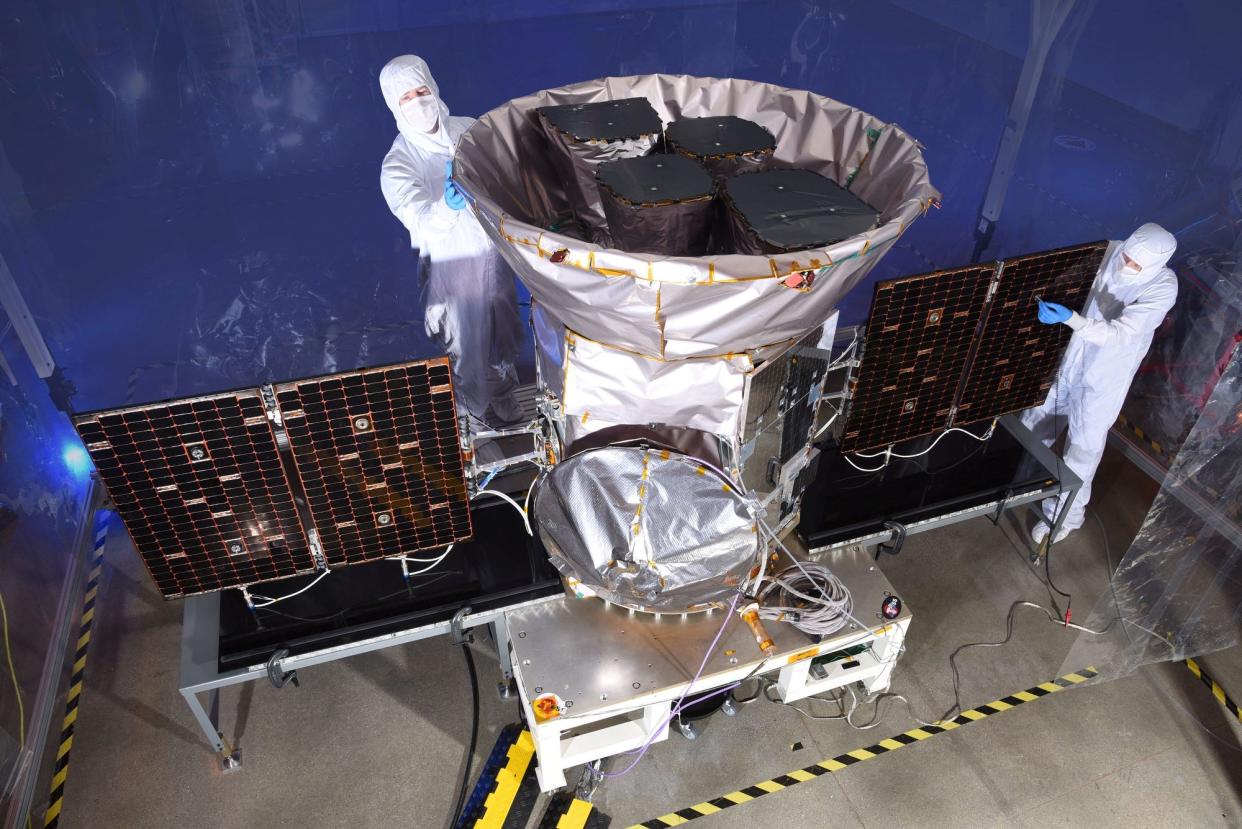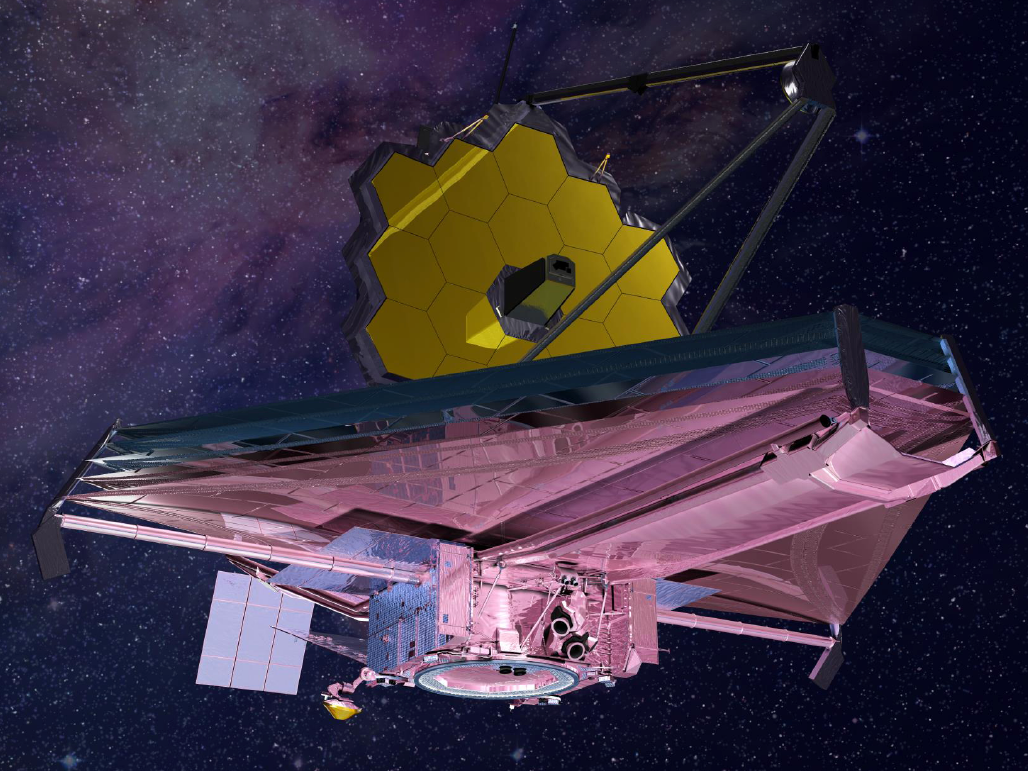SpaceX is about to launch a NASA telescope that could discover thousands of new alien planets
Elon Musk's rocket company, SpaceX, is launching a new NASA telescope next week.
The Transiting Exoplanet Survey Satellite (TESS) will stare down 200,000 nearby stars to search for rocky, Earth-size planets.
A catalog of worlds discovered by the new space telescope could be a boon to the search for alien life.
SpaceX, the rocket company founded by Elon Musk, is about to launch NASA's most powerful telescope yet to hunt for nearby alien worlds.
The telescope in question is called the Transiting Exoplanet Survey Satellite, or TESS for short.
If all goes well, a 230-foot-tall Falcon 9 rocket will propel the car-size spacecraft into orbit around 6:32 p.m. EDT on April 16 from Cape Canaveral, Florida. SpaceX reportedly completed a test-fire of the rocket that will launch TESS yesterday, clearing the path for launch next week.

NASA
NASA detected thousands of exoplanets with its last planet-hunting space telescope, called Kepler. Extrapolating the results to the rest of the Milky Way, researchers believe there could be about 10 planets in our galaxy for each one of the galaxy's roughly 200 billion stars.
But Kepler only surveyed a small and deep region of the night sky. TESS will scan a space hundreds of times larger — and much closer to Earth — to hunt for nearby and potentially habitable alien worlds.
"We learned from Kepler that there are more planets than stars in our sky, and now TESS will open our eyes to the variety of planets around some of the closest stars," Paul Hertz, the director of NASA's astrophysics division, said in a press release. "TESS will cast a wider net than ever before for enigmatic worlds."
What's more, Hertz said, NASA's next "great observatory," the $8.8-billion James Webb Space Telescope, will use TESS's data to zero in on and study the most exciting nearby rocky planets (as will future ground-based telescopes).
Why TESS is such an important planet-hunting mission

Bill Ingalls/NASA
The Kepler spacecraft stared down stars to detect dips in brightness caused by planets passing in front of their home stars. It did this for 150,000 stars in a part of the night sky that's just 0.25% of the total area, yet 3,000 light-years deep.
Kepler has found about 50 rocky and Earth-size worlds, 10 of which may be habitable, plus more than 4,000 total planet candidates since its launch in 2009. A Google artificial intelligence algorithm has since sifted through the data and possibly detected even more.
Meanwhile, TESS will gaze at 200,000 stars over 90% of the sky within a relatively cozy 200-light-year range of Earth.
If Kepler was a long-range sniper rifle that found thousands of planets in a narrow section, that makes TESS a grenade that will find thousands more nearby.

Zach Berta-Thompson/NASA
"TESS will discover thousands of planets and is further specially designed to find a pool of small planets transiting small stars," a website for the project explains. Specifically, researchers promise — based on Kepler's census — to serve up 50 rocky, Earth-size worlds for scientists to scrutinize.
The discoveries made using TESS could prove vital to the James Webb Space Telescope (JWST), which would be the largest observatory ever launched into space.
JWST, now scheduled to launch around May 2020, will rival the abilities of the Hubble Space Telescope.
It will take pictures in infrared light, which is invisible to human eyes yet perfect for studying planets through clouds of gas and dust in space that typically obscure distant worlds.
How TESS could revolutionize our search for alien life

NASA
TESS's fresh catalog of nearby and likely Earth-size alien worlds will give JWST scores of compelling targets to study in detail.
With some extreme luck, JWST might even sample light from an exoplanet's atmosphere — and find indirect evidence of life.
The ability to study the air supply of a distant Earth-size planet is even more possible with the Giant Magellan Telescope (GMT), one of the two largest ground-based observatories under construction today.
SEE ALSO: Dim red stars that are nothing like the sun may be our best hope of finding aliens
Slated to open for business in 2022, GMT is designed to resolve details four times finer than JWST. This could help astronomers study exoplanets in ways what they've been dreaming of since the first confirmed discovery of an alien solar system in 1992.
"As a planet passes in front of its star, a large telescope on the ground, like the GMT, can use spectra to search for the fingerprints of molecules in the planetary atmosphere," Patrick McCarthy, a leader of the project, said in a statement to Business Insider.

Giant Magellan Telescope – GMTO CorporationSpectra refers to the blend of colors in starlight. When that light passes through a planet's atmosphere, chemicals absorb and remit certain parts — leaving a smoking-gun pattern of their presence.
A mix of oxygen and methane gases similar to that of Earth's atmosphere, for example, could be a "fingerprint" of life's presence on an exoplanet.
McCarthy also said large and powerful new telescopes like GMT might even be able to deduce weather systems and surface features of planets located trillions of miles away.
With some luck, we might even be able to fly tiny, high-speed spacecraft past the most promising planets to get a closer look.
NOW WATCH: Stephen Hawking warned us about contacting aliens, but this astronomer says it's 'too late'
RELATED: Photos from recent SpaceX launches:
See Also:
DON'T MISS: NASA has Googled the stars — and found new rocky planets in a 'major discovery'
